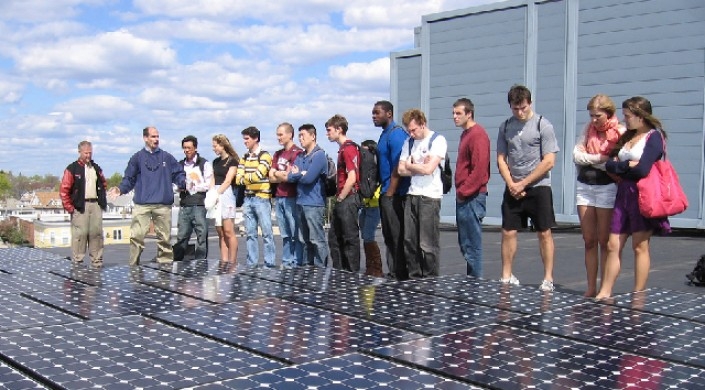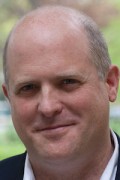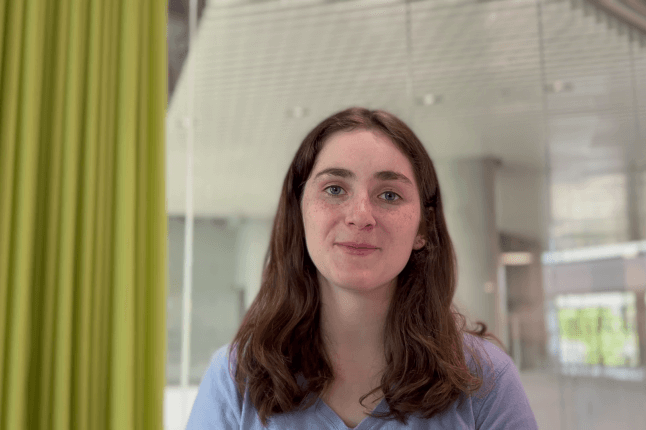News
SEAS students visit The Arsenal on Charles to view the rooftop solar panel array. (Photo by Eliza Grinnell/SEAS Communications.)
Beginning in the fall of 2018, Harvard undergraduates will be able to choose a new concentration in environmental science and engineering.
The new concentration, Harvard’s term for a major, is administered by the John A. Paulson School of Engineering and Applied Sciences (SEAS), and will give A.B. degree students a broader view of the environment as a whole, and hands-on engineering project experiences.
Approved by the Faculty of Arts and Sciences on April 2, environmental science and engineering becomes the 50th undergraduate concentration offered by Harvard College.
Current students pursuing the ESE track as part of the Engineering Sciences concentration can choose to remain in their program until graduation or switch to the new concentration. The ABET-accredited engineering sciences — environmental science and engineering S.B. track, which enables students to apply for engineering licenses, will not be affected by the new concentration.
A major impetus for the new concentration was to raise the visibility of the environmental science and engineering program, which has seen increased interest over the past few years, said Patrick Ulrich, Associate Director of Undergraduate Studies in Environmental Science and Engineering. The number of students pursuing the ESE track concentration grew from 11 in 2011 to 28 last year.
What sets the new concentration apart is its focus on flexibility; students will be able to build an ESE concentration from an expanded menu of courses, including additional options from the Department of Earth and Planetary Sciences and the Department of Organismic and Evolutionary Biology.
“The environment encompasses all of the earth’s systems—physical systems and biological systems—and we wanted to pull all that into the new concentration,” Ulrich said. “That focus will help students view the earth system as a whole, recognizing all of its parts.”
Students will also be required to complete an engineering design project, either through an elective that has a design component, or as an independent project or thesis. Challenging students to complete a hands-on project will give them exposure to the engineering design process, and a sense of what it takes to solve complex environmental problems in the real world, Ulrich said.
“Our students are interested in global environmental challenges, and what they can do to solve them,” said Daniel Schrag, Sturgis Hooper Professor of Geology and Professor of Environmental Science and Engineering and Area Chair for Environmental Science and Engineering. “This new concentration will give our faculty greater flexibility to meet our students’ needs in better ways, and will help us build a community of engaged and dedicated students who have skills to tackle some of the world’s hardest problems.”
Concentrators who earn an A.B. in environmental science and engineering often go on to graduate school, but the concentration also positions students well for careers in public policy, such as a scientist at the Environmental Protection Agency, and for work in environmental consulting or on a corporation’s sustainability team.
“We want to train broad-based quantitative engineers and scientists who can look at a problem, break it down, and use their skills and information to work through the solution,” Ulrich said. “You can’t solve environmental problems in a narrow box. You need to see outside perspectives, and we are hoping that this curriculum encourages students to think that way.”
Topics: Academics
Cutting-edge science delivered direct to your inbox.
Join the Harvard SEAS mailing list.
Scientist Profiles
Daniel P. Schrag
Sturgis Hooper Professor of Geology and Professor of Environmental Science and Engineering
Press Contact
Adam Zewe | 617-496-5878 | azewe@seas.harvard.edu




